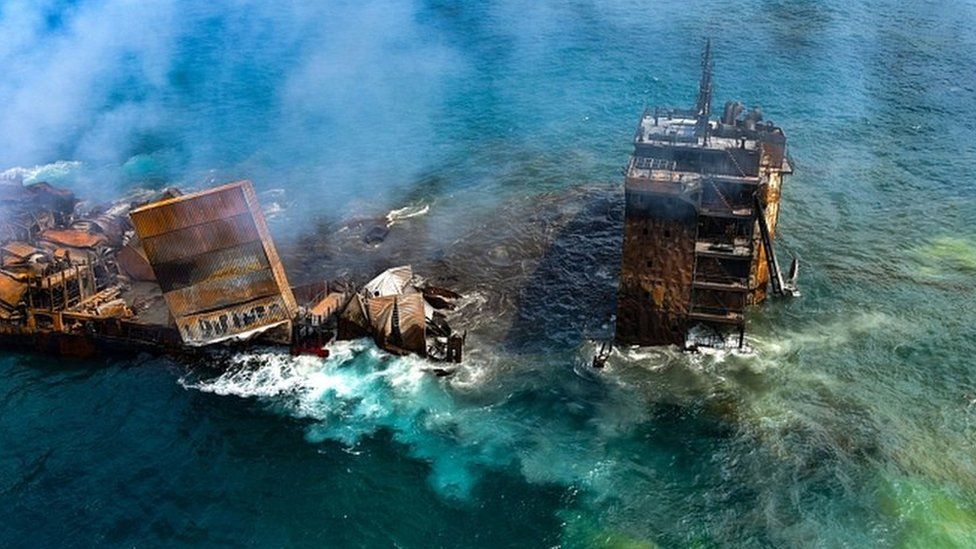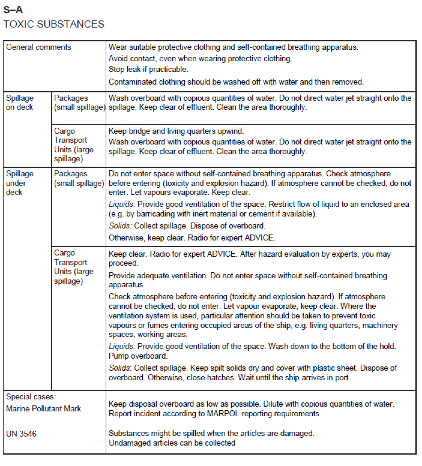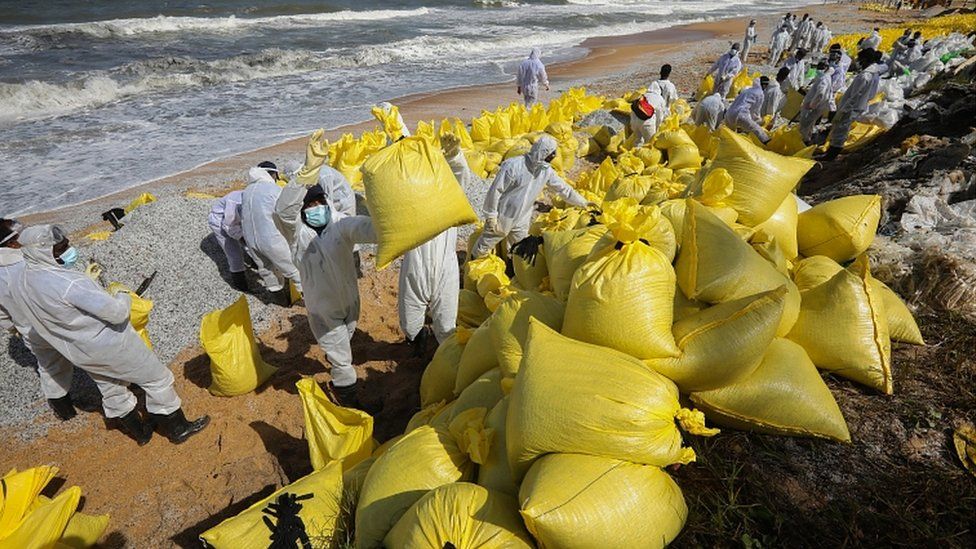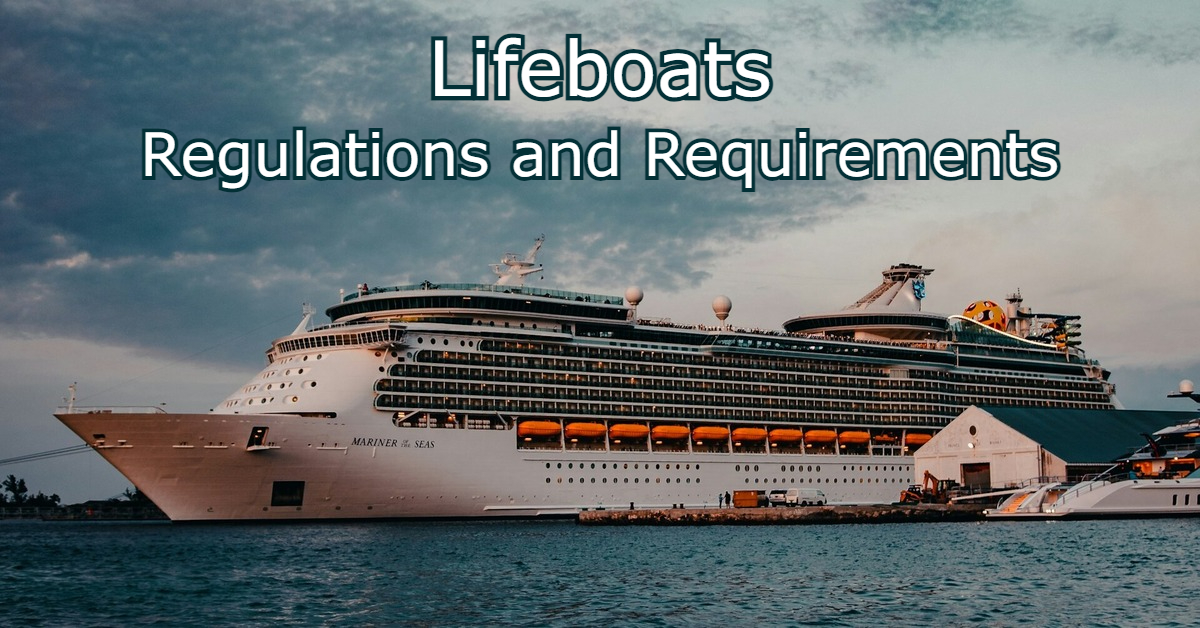A spillage of dangerous goods occurring on a ship can be a frightening and dangerous situation. It is therefore important to know how to act in these circumstances, in order to minimize the risk of harm to yourself, others, and the environment.
When a spillage is first detected, the crew should take immediate action to contain the spillage. This may involve evacuating the area, restricting access and the use of absorbent materials, such as sand, earth, or sawdust, to soak up the liquid. Using firefighting foam may also be necessary to prevent the spread of fire.
Every year, several accidents involving the spillage of dangerous goods occur on ships. These accidents can have serious consequences for the environment, the ship’s crew and passengers, and the local community.
In 2021, a cargo ship carrying fuel and chemicals caught fire off the coast of Sri Lanka and left in its wake an environmental disaster that the island will likely have to live with for decades. This article will provide guidance on what to do in the event of a dangerous goods spillage on a ship.

What To Do If Spillage Of Dangerous Goods Occurs On A Ship?
If a spill involving hazardous materials occurs onboard, it is imperative that the procedures laid out in the ship’s emergency plan be followed. Such responses in the ship’s emergency plan should be based on Emergency Response Procedures (EmS Guide) for specific dangerous goods having regard to, inter alia, the type of ship, the quantity and type of packaging of the dangerous goods, and whether the goods are stowed on or under deck.
In addition, crew members should get a rapid general view of the situation and judge the need for the most urgent actions to be taken, such as medical care of victims, restriction of access, evacuation, reduction of leakages, etc.
This will involve ascertaining the properties of the goods involved and taking necessary precautions before initiating spillage control operations. The following are the procedures to follow after ascertaining the properties of the spillage of dangerous goods.
Notify The Ship’s Command.
The first step is to sound the ship’s general alarm. This will ensure that all crew members are mustered and made aware of the situation so as to be in a position to take appropriate action. It also informs the ship’s master and officers who are normally in charge of vessels’ emergency actions. The alarm should be sounded as soon as the spillage of dangerous goods is discovered.
Evacuate The Area.
In the event of a DG spill on a ship, a major priority is to evacuate the area. This is done in order to protect people from potential exposure to hazardous material. Personnel who are not involved in the emergency response should be evacuated from the scene.
If it is safe to do so, the vessel should be moved away from the spill area. This will help to minimize the spread of the DG and reduce the potential for environmental damage. Once the area has been evacuated, emergency responders will begin to assess and address the situation.
Contain The Spill
Next, you will need to contain the spillage. Use any available materials to do so, such as absorbent pads, sand, or earth. It is an international legal requirement to stock and carry such material in the ship’s Shipboard Oil Pollution Emergency Plan (SOPEP) locker. If the spillage of dangerous goods is small, you may clean it up yourself. If it is large, or if you are not confident in your ability to clean it up safely, you will need to call for help
Contact The Local Authorities.
In the event of a Dangerous Goods spill on a ship, it is important to contact the local authorities as soon as possible. They will be able to provide assistance and guidance on how to deal with the situation. In case of a bigger spill, there might also be a legal requirement to contact the ship’s flag state.
The local authorities will likely have a plan in place for dealing with such an event. They will also have the resources necessary to clean up and mitigate the damage caused by the spill. It is important to follow their instructions and cooperate with them fully in order to ensure that the situation is handled as safely and efficiently as possible.
What Is the EmS code For Dangerous Goods?
Emergency procedures for ships transporting dangerous goods (EMS) is intended to provide direction on what to do in the event of an incident involving certain dangerous materials. The goods included in the EMS are classified according to the IMDG Code and grouped in such a way that goods requiring the same or similar emergency action appear on the same emergency schedule.
Each emergency plan is broken down into five sections:
- Group title accompanied by the emergency schedule number.
- Specialized equipment is required.
- Emergency response procedures.
- Emergency actions.
- Basic first aid.
The EmS code is assigned to each UN Number in column 15 of the Dangerous Goods List in the IMDG Code, chapter 3.2. The EmS code comprises two parts – the first part, starting with the letter “F”, is for fire; the second part, starting with the letter “S”, is for spillage

Importance Of Contingency Plan Onboard Ships.
When goods are being transported by sea, there is always a risk of them spilling and causing a dangerous situation. A contingency plan is always important, but it becomes a matter of life and death when there is a spillage of dangerous goods. In the event of such an accident, it is important for crew members to know how to act quickly and safely. The crew must know what to do in order to minimize the damage.
There are three key things that need to be done in the event of a spillage of dangerous goods. First, all crew members need to be aware of the emergency and know what to do. Second, the spillage must be contained and prevented from spreading. Third, the cleanup process must be started as soon as possible. If these steps are not followed, it could lead to a serious accident.

Crews collect lentil-sized plastic pellets from a Sri Lankan beach. By one estimate, the X-Press Pearl was carrying some 75 billion of these pellets when it sank off the coast of Colombo. Photo: Shutterstock/Ruwan Walpola
What Is The Emergency Schedule For Spillage?
The emergency schedule for DG spillage on a ship is a plan that outlines the specific actions that should be taken in the event of a hazardous material spill. This plan is designed to minimize the damage and potential health risks associated with a spill and to ensure that the proper authorities are notified and responders are dispatched as quickly as possible.
The emergency schedule for DG spillage on a ship will vary depending on the specific situation and the type of hazardous material involved. However, some key steps that are typically included in this plan are:
- Notifying the captain and crew
- Securing the area around the spill
- Containment and cleanup of the hazardous material.
Conclusion.
Keeping international trade moving entails carrying dangerous goods. As with all cargoes, accidents do happen and despite the dangers associated with the carrying of such cargoes, a well-trained crew is the best team to deal with fires on board ships resulting from DG spills. Keeping this in mind onboard training must include EmS to enable the ship crew to be well-prepared for incidents involving fire or spillage of dangerous goods.





Leave a Reply